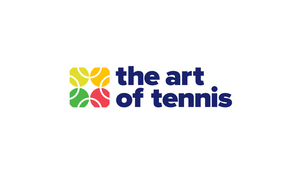Thinking outside the square (or rectangle)

When I first started coaching tennis, I knew nothing and I was open to learning from every one and every thing that I ran into in the tennis world and tried to understand everything about the industry.
Once I settled a little bit, I noticed patterns and would ask myself why is it done that way or this way?
Some observations:
- Tennis coaching programs started in week 2 to allow for enrolments in week 1 and then generally going for 8 weeks to allow for potential rain or other cancellation.
- Predicatable sizes of groups. 30 min, 45 min and 1 hour with the exception of perhaps a squad that may go for 90 minutes.
- Games like ‘Skeleton’ ‘Jail’ and other fun games were a staple for coaches and it was safe to rely on a fun game at the end to keep students back for more.
- Kids would re enrol each term for another 8 week program. Retention was 70% plus but still these kids exited the program and then re enrolled into the same program.
- What is with those washing baskets?
There is an awful lot to be said for learning from your industry but as I learnt more about other sporting businesses, it opened my mind to doing things differently.
- Swimming lessons are booked well in advance with a waiting list of kids waiting on spots. A financial commitment was required early to lock in your child’s place.
- Gymnastics lessons have a strong expectations and time commitment for those kids wanting to pursue the performance side of the sport.
- Martial arts grading programs and belt systems inspire kids by recognising their success and showing clear pathways forwards.
- Martial arts business model is based on signing up to membership where a weekly or fortnightly fee is paid for the class or sometimes unlimited classes.
- Footy through the OZ Kick program, got kids playing the game straight away. Not playing games necessarily like ‘Skeleton’ or ‘Jail’ in tennis but playing THE game and given them the skills to play THE game at home and at school.
- E Sports enable kids to connect online with their friends and practice hours and hours by choice.
At my tennis academy in Scarborough, Western Australia, It wasn’t hard to create a program where every single day available during the school term can be scheduled and booked with tennis programs. Then given the high retention rate, switching the way we do enrolments from re- enrolling every term to being automatically enrolled made sense for both clients and the business. We use InTennis and our online enrolment and online invoice payment system makes this easy and efficient. Rather than keeping a spare week there to allow for cancellations, it is easy to apply a credit for the following term or holiday program. It can be difficult to get people to come more than once a week for lessons but its easier to extend the length of class time.
Monthly direct debit membership
I really like the martial arts model from a business and tennis development point of view and am currently looking at ways on how this model can work in with Tennis. A membership which allows you to come either once a week during the school term or a membership which allows you to come to any session which suits your level. This is easily done by direct debit but the concerns are with the coaching quality along with enrolment quotas. The coach/pupil ratio would get blown up in this model. Unpredictable attendees for each session makes it very flexible for the clients but hard for the class management. However if done well this would remove administration, give flexibility and encourage commitment allowing kids and coaches to focus on their tennis. This then creates a true tennis school where true learning and growth can take place and a business with a regular revenue stream.
Rick Willsmore
The Art of Tennis














